#is called pseudomorph of love
Text
The most human emotion
After having given it some thought, and also considering Chapter 97, I’ve thought a lot about what Enma said in chapter 88.
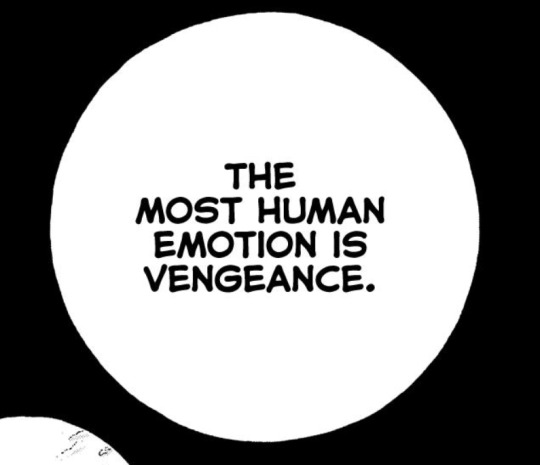
Of course, back when Phos went onto their revenge spree, most of us were on board with it, especially since the gems have wronged Phos greatly. But I never couldn’t really agree with what Enma said, especially since he considered Phos too pure after they got their gold aloy and agate legs.

And exactly that thinking is why the Moon people can’t pass into Nirvana. They considered Phos, while they were looking monstrous and only were out for blood (inclusions?) the most human that they’ve ever been,

while Adamant considered Phos human enough before (or rather saw Doctor Ayumu in them) that state.

If there is one thing that keeps getting Phos closer and closer to humanity, then it was them reveiving or showing love. When Ventri gave them the agate legs, she also gently petted over their broken face, or when they lost their arms, Antarc got themself into danger to get them new ones. Even receiving Lapis’ head was an act of love from Cairn. After each of those times they developed further and changed more.
But when they got to the moon? They were forced to have the pearl eye, they were forced to wear the lunarian clothes. That is when they stopped developing and were stuck in that Laphos phase.
Through the moon they ended up desiring vengeance, which made them lose sight of who they originally were. So it’s notable, when they got the final and last treasures, Sensei’s eye and Cinnabar’s mercury that they radically changed again. One was due to a promise that was fulfilled and another to give Phos the chance to pray.
But they truly became enlightened through a motherly kiss.

Phos wasn’t human because they wanted vengeance, but because they love. The lunarians are so focused on wanting salvation, that they could never consider love as a way to reach Nirvana. They only hurt and destroy, because that’s the thing that got them onto the moon in the first place.
So in a way, a rock amalgation becoming a divine figure is more human than any human souls that are residing on the moon.
Because the most human emotion is love.
#I don't know what I was going for here#but maybe that's why the artbook of ichikawa#is called pseudomorph of love#houseki no kuni#Houseki no kuni chapter 97#Hnk#land of the lustrous#Lotl#Phos#phosphophyllite#Dr Ayumu#kongo sensei#Adamant#Aechmea#Enma
1K notes
·
View notes
Note
8 13 14 20 25 please
8:Game of the year?
That I've played this yr def Signalis! of released this year I think MyHouse.wad. BG3 & Tears of the Kingdom I both loved but haven't finished either properly yet so
13:How was your birthday this year?
pretty depressing tbh, not much to say about it
14:Favorite book you read this year?
Answered here
20:What’s something you learned this year?
Uhh I'm very much I forget everything unless I remember type, so hard to tell. OH @lottiemilfews was telling me about pseudomorphs the other day, and they're so fucking cool so I loved learning about that!
25:Did you create any characters (in games, art, or writing) this year? Describe one
I have a masks character that I had to create a lil while ago in a session 0 for a friends stream campaign next yr as our prev star wars rpg one just finished they're called Lee and they're a weird lil butch goth with chronic pain issues from their powers and have a lot of repressed rage
#ask#anon#thank you!#my rpg character choices say nothing about me at all ever idk what you mean#miss my star wars rpg character a bit but damn they had a fun ending
1 note
·
View note
Text
Cuttlefish --not so cuddly
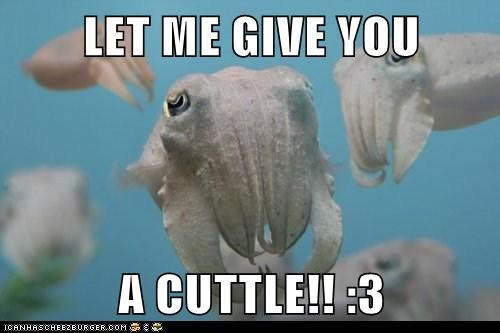
I. Classification
Animalia
Bilateria
Protosomia
Lophozoa
Mollusca
Cephalopoda
Coleoidea
Sepiida
Sepiidae
Sepia
officinalis
Integrated Taxonomic Information System, Sepia officinalis (Linnaeus, 1758)
II. Biology
Vagabond Lifestyle
The Sepia species can be found across temperate and tropical seas except off the coast of the Americas. A range of species can be found in Asia, Europe, Africa and Australia.
Each species of sepia live in either tropical or temperate waters. They are saltwater dependent so they all inhabit the ocean. They can either live in shallow or deeper waters (as low as 2,000 ft beneath the surface). Some species migrate from warm to colder temperature as the seasons change.
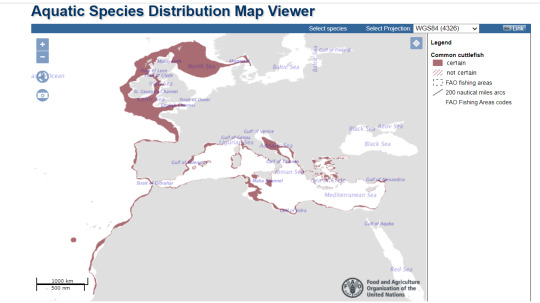
Image retrieved from fao.org
Armed and Dangerous
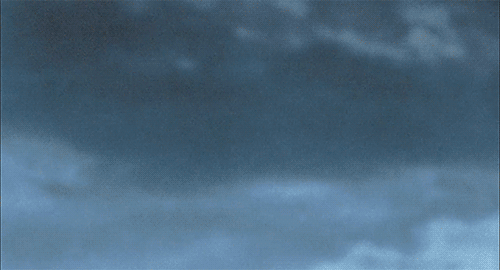
The Cuddlefish Cuttlefish has 8 arms along with 2 tentacles. These are specialized for holding on to prey like fish or shrimp. It lures prey by altering its skin color while waving its arms in a mesmerizing fashion to draw in unsuspecting prey. When the prey is near enough, its tentacles shoot forward and entangle the prey. The arms of the cuttlefish also has the ability to suck in water into its mantle cavity in order to appear larger when trying to ward off predators.
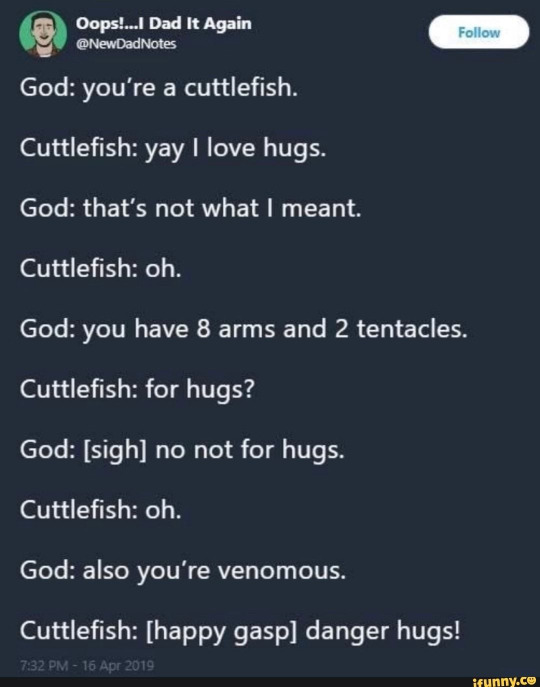
Beak
Much like a parrot’s beak, this is used to subdue prey or as a last defense towards predators. It lies deep in the base of the 8 arms of the cuttlefish. Beaks are one of the characteristics scientists use to identify species from each other.
Big Brain Energy

What makes this organism diverse may be attributed to the size of its brain. It is considered as one of the largest of any invertebrate. It can handle a variety of inputs from different senses like sight,smell and “sound” caused by pressure waves. Based on various studies, the cuttlefish can use visual cues in solving mazes. They are considered as intelligent as octopus and pigeons.
Cuttlebone

Image retrieved from: https://www.pbs.org/wgbh/nova/camo/anat-nf.html
Cuttlefish can control their buoyancy! Through their cuttlebone, a porous internal shell, they can adjust gas levels in the forward chamber and water level in the rear chamber, to control the buoyancy to rest in the water column.
Eye see you

Image retrieved from: https://www.pbs.org/wgbh/nova/camo/anat-nf.html
The cuttlefish is considered to have the most highly developed eyes in the animal kingdom. It is able to see in low light and can detect polarized light. While humans only reshape lenses to see, these organisms reshape their whole eye. It has a “w” shape on the pupil which helps control light intensity entering the eye. Cuttlefish have amazing eyes that can detect differences in polarization, and can shift its lenses forwards and backwards. They can see behind them!
Fintastic form

There are specialized fins on either side of the mantle that helps the cuttlefish reposition and glide through the water. It looks like a flouncy skirt when used to maneuver. It can help the cuttlefish go forward, backward and even in circles.
Early bird catches the worm. In this sense, the fins are used by smaller males to beat other larger males gain access to females.
More to Love
The cuttlefish has 3 hearts where two pump blood to the gills and one that circulates the oxygenated blood to its body. Its blood is a blue-green color because of hemocyanin, a copper containing protein that transports oxygen in most invertebrate bodies.
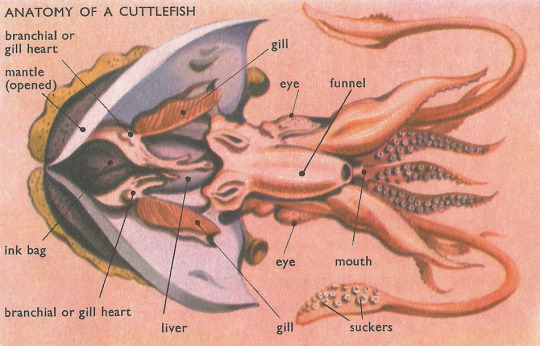
Image retrieved from: https://www.daviddarling.info/encyclopedia/C/cuttlefish.html
Secret Weapon
Since the cuttlefish is closely related to squids and octopi, it also has an ink sack that helps it ditch or distract predators who rely on sight. There are two ways to eject ink: one is to create a smoke screen behind the organism as it jets away or it can create a decoy by releasing ink in the form of pseudomorphs which are bubbles of ink surrounded by mucus that are about the same size as the cuttlefish. Dopamin and L-DOPA are present in the ink which can temporarily paralyze the sense of predators who hunt by smell.
youtube
Hairy details
There are lateral lines that consist of tiny hairs in the mantle of the cuttlefish that are sensitive to pressure waves. They are sensitive to 75 and 100 hz. These hair cells can be used as a defense mechanism by detecting movement of surrounding predators around the cuttlefish.
Mantle
Cuttlefish locomotion is heavily dependent on the mantle. When escaping predators, water is sucked into the cavity and the mantle muscles expel the liquid with great force so that the organism can move in the opposite direction. The water exits through the funnel which controls the angle of the spray. The mantle aids in respiration by bringing water up to the gills where oxygen is filtered and released into the bloodstream.
Reproductive organs
Males have a reproductive arm that inserts into the female’s buccal area, the area where the spermatophores are stored. Females accept more than one mate which leads the males to spray water through his mantle into the female’s buccal area to wash out other males’ spermatophores. Once ready to lay eggs, the female uses her arm to wipe the spermatophores onto the eggs.
Life as we know it
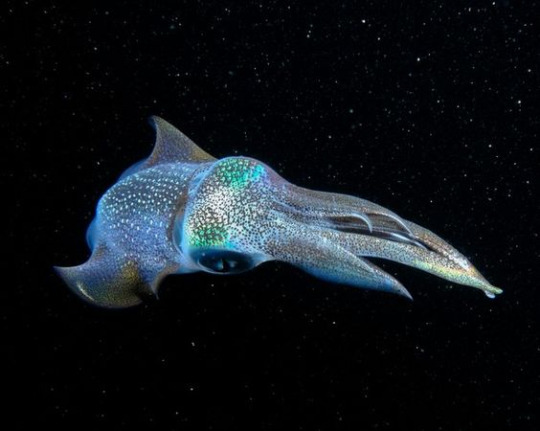
Image retrieved from: National Geographic Photo Contest 2019
In the springtime, after females lay their eggs they soon die. After two months, th eggs start to hatch. This process is highly dependent on water temperature. Once hatched, cuttlefish babies feed on small crustaceans and rapidly increase in size. Once big enough, the cuttlefish soon reach sexual maturity wherein the males mature much faster than the females. In ideal conditions the cuttlefish reach adulthood at 18-22 months. Their life span can reach 12-24 months
youtube
III. Relationship
Cuttlefish is an economically valuable marine species. Just like their cousins the squid and octopus, cuttlefish are a food source for humans. They are found in most temperate and tropical waters and the market for cuttlefish is large in Asian countries. In Japan, large cuttlefish are eaten raw as sashimi and the smaller ones are packed and frozen for cooking or sometimes dried (surume) (Nash & Thorpe, 2003).
The cuttlefish has an internal shell called the cuttlebone. This internal shell usually gets washed up to the shore and is picked up by beachgoers, collectors, and researchers. There aren’t many uses for the cuttlebone. Research on the effectiveness of cuttlebones as a supplement for caged birds are limited. However, from the research of Galal (2019), cuttlebone meal as dietary supplements for Japanese quails improves egg number and egg laying rate. There is also an increase in fertility rate and the body weight of the chicks.
Oil is also harvested from cuttlefish liver. In a journal article by Meivelu Moovendhan et al (2018), the oil from the liver of Sepia pharaonis was evaluated for its quality characteristics and biological activity. They found out that the oil contained Vitamins A and E, and nine fatty acids. Among the fatty acids present, Linoleic acid, DHA, and EPA had higher amounts.
According to Mehanna et al (2011), cuttlefish are overexploited in the Southeastern Mediterranean waters. The 45-day closed seasons are not effective, rather, they suggest that trawl selectivity should be improved. Also, the protection of spawning grounds through the establishment of MPA is necessary for improving stocks.
IV. Did you know?
Cuttlefish are also called “chameleons of the sea” because of their ability to camouflage. They can change their color through the help of specialized cells in their skin called chromatophores. Aside from color changing, they can also mimic the texture and shape of objects around them. They extend and retract their papillae in their body to change their skin’s texture.
Male cuttlefish change its color to attract femates. They can multitask, changing the color of half of their body to attract mates, while displaying aggressive coloration on the other side to ward off other males. In order to get a mate, a male cuttlefish also do “cross-dressing” and disguise himself as female. Since females only have three pairs of arms, a male even hides his fourth pair of arms and pretends like he’s carrying an egg. A real master of disguise!
Cuttlefish can hypnotize their potential prey by displaying pulsating light and color.
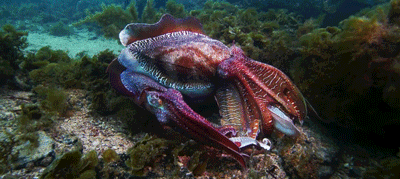
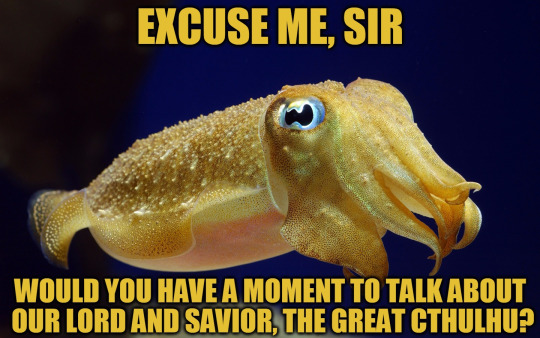
V. References
Compton, A. and L. Wiley (2011). "Sepia officinalis" (On-line), Animal Diversity Web. Retrieved October 08, 2020 from https://animaldiversity.org/accounts/Sepia_officinalis/
Geary, Daniel. (2015). Three hearts and blueish green blood… 10 fun facts about cuttlefish. Retrieved October 07, 2020 from https://atmosphereresorts.com/three-hearts-and-blueish-green-blood-10-fun-facts-about-cuttlefish/
Keyser, Hannah. (2015). 10 Colorful Facts About Cuttlefish. Retrieved October 07, 2020 from https://www.mentalfloss.com/article/66759/10-colorful-facts-about-cuttlefish
Mehanna, Sahar & Haggag, H. (2011). STOCK ASSESSMENT OF THE COMMON CUTTLEFISH, Sepia officinalis IN THE SOUTHEASTERN MEDITERRANEAN, EGYPT. Journal of Shellfish Research. 30. 1013-1013.
NOVA | Kings of Camouflage | Anatomy of a Cuttlefish (non-Flash) | PBS. (2007, March). Retrieved October 10, 2020, from https://www.pbs.org/wgbh/nova/camo/anat-nf.html
Reid, A., Jereb, P. and Roper, C.F.E (2005). “Cephalopods of the world. An annotated and illustrated catalogue of cephalopod species known to date. Volume 1. Chambered nautiluses and sepioids (Nautilidae, Sepiidae, Sepiolidae, Sepiadariidae, Idiosepiidae and Spirulidae).
Reproduction and Life Cycle. (n.d.). Retrieved October 10, 2020, from https://cuttlefishsepiida.weebly.com/reproduction-and-life-cycle.html
FAO Species Catalogue for Fishery Purposes. No. 4, Vol. 1. Rome, FAO. 2005. 262p. 9 colour plates. pp. 56 - 61.
4 notes
·
View notes
Photo

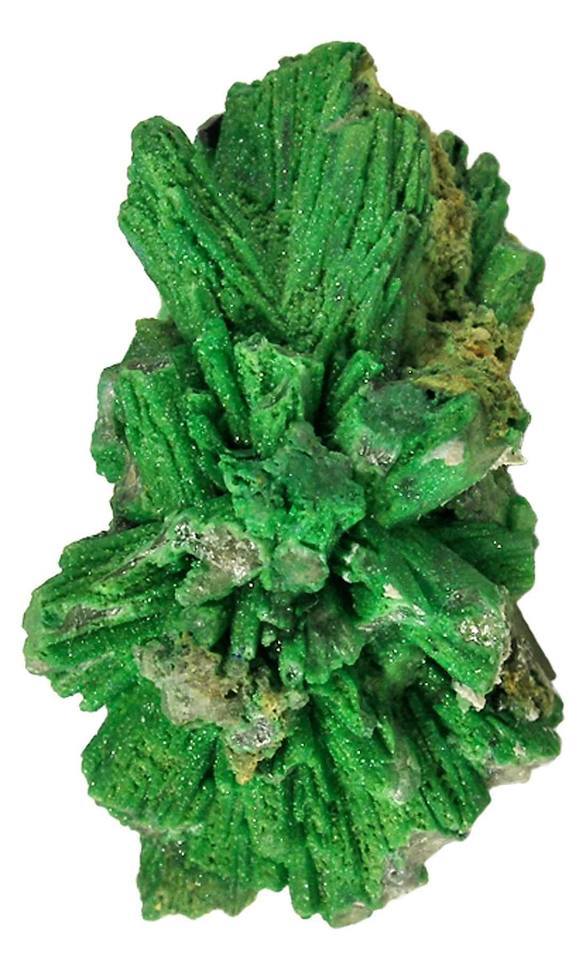


The Tsumeb mine
Ore deposits are strange and complex places, with huge mixtures of minerals in varied stages of alteration, decomposition and transformation into one another as the oxidative powers and dissolved mineral content of groundwater interact with the primary minerals that were originally precipitated, sometimes billions of years before. The mineral mix and zonation within the deposit is a reflection of the chemistry of the initial precipitation process, and a summary of its geological history all wrapped in one very messy package that you tear or drill open piece by piece. I have shared so many beautiful mineral photos from this particular location that it's time to write a bit about it. This mine in the deserts of Namibia is world famous amongst mineral collectors as a source for many different beauties, and has been called the most complex mineral deposit ever discovered. The main product was copper, and the initial hill was green with oxidised metals when first discovered, but many other metals were extracted from the ore mix, including lead, zinc, germanium, silver, arsenic and cadmium. The mine opened during the harsh colonial period 100 years ago, and a town was built around it. Tsumeb has now more or less closed as a copper producer, but the workings and tailings are still exploited for mineral specimens.
Beautiful minerals found here include (amongst many) the bright green and blue copper carbonates malachite and azurite (see http://on.fb.me/1CbfPFa), deeper summer green dioptase (seehttp://on.fb.me/1JX5Hus), the lead ore cerrusite, that forms such strange tesselated twins (seehttp://on.fb.me/1KA7bow) and the rare green beauty of Bayldonite (see http://on.fb.me/14NwiEF).
The ore body was a huge mineralised pipe 1300 metres long, running vertically through a Precambrian dolomite (limestone with magnesium instead of calcium carbonate). Its origin is hotly debated, though it could be an old cave system from a long gone karst landscape that was later filled with minerals by hot fluids when buried deep in the crust. Others have suggested a volcanic origin, as a weird granitoid forms the core of the filling rock, presumably the source of the metals.
The green hill was already exploited by Africans in prehistory, though they made barely a dent, but modern methods scraped out this very high grade ore during the course of the last century. The shafts went down over a kilometre, though they are now partly flooded. The ore was so rich that much of it could be directly smelted instead of having to be processed first, an obvious benefit to the profit margin. More notably for mineral fiends, 243 minerals have been found here, and is the type locality (from which the mineral was first characterised and described) for 56 (as far as I know no other place on Earth has as high a score, correct me please if you know different).
To illustrate its joys and beauties I selected a lovely and huge cluster of blue azurite on malachite stained mother rock that once graced the Smithsonian collection (16.7 x 13.2 x 10.5 cm), a very classic Tsumeb piece of malachite pseudomorphing azurite, a chemical reaction frozen in time in which one mineral turns into another that is more stable for the ambient conditions (5.6 x 3.8 x 2.8 cm), a lovely and very rare bayldonite pseudomorphing mimetite from the upper part of the ore body (see http://on.fb.me/1zo1vvI, 3.4 x 2.1 x 2.1 cm) and a gemmy cerussite included by malachite, a real dance of oxygen, lead and copper (4.1 x 3.2 x 2.3 cm).
Loz Image credit: Rob Lavinsky/iRocks.com
http://www.mindat.org/loc-2428.html
#tsumeb mine#mineral#minerals#limestone#dolostone#geologyy#malachite#mineralogy#mineralmonday#copper#crystal#gemstone#the earth story
84 notes
·
View notes
Photo

This is roswellite or roswell stone. This is supposedly what's left behind, on the ground, after the UFOs landed in Rosewell. Priced very high online, but I found them at a little hole in the wall in Kentucky for a dollar. I'm so stoked to work with it. "The stones we call Roswellite are six-sided pseudomorphs of “Dolomite after Aragonite.” This means that Dolomite has replaced the Aragonite crystal clusters that comprised the original formations. Roswellites can facilitate interdimensional awareness and travel. When one mediates with these stones for a sufficient amount of time, one may see a multitude of dimensional "tunnels" opening up before one’s inner sight. Following any one of these tunnels can lead to encounters with beings and events in other dimensions. " ----heavenandearthjewelry.com #crystal #crystalhealing #gemstones #roswell #roswellite #minerals #earth #love #energywork #energyhealing https://www.instagram.com/p/B60tHM6FBx0/?igshid=1k306o55gatwo
4 notes
·
View notes
Text
So, I’m putting all my crack theories/observations about hnk in one place so that if any of them are proven correct I’ll be able to refer back to this and say that I called it.
The title of Ichikawa’s art book, Pseudomorph of Love seems to allude to her approach for Phosphophyllite’s changes. Whenever Phos loses and gains a new body part, it’s an act of compassion in some way. Except for the pearl eye, all of Phos’s alterations have followed this pattern
They lost their legs while trying to help Ventricosus, and gained their agate legs because Ventri decided to show them compassion and not stoop to the level of the Lunarians.
While Phos’s own self-hatred tempted them to chop off their arms, it was only when the ice floes preyed on their desire to save Cinnabar that Phos accidentally-on-purpose lost their arms. Antarc initially dismisses the gold and platinum as useless, but when they see that Phos is not-so-subtly projecting their own feelings of uselessness onto the metals, Antarc changes their tune and decides to attach them to Phos. In a roundabout way, Antarc is trying to communicate to Phos that they aren’t useless ;_;
Phos loses their head trying to save Cairngorm’s arm, and Cairngorm decides to give them Lapis’s head. While they kind of can’t help but project Lapis onto Phos after they wake up, the fact that they were willing to give up their own head, and the fact that they finally admitted to themselves that they don’t believe any of the gems will be brought back indicate to me that they did this out of genuine concern for Phos and not because they’re trying to resurrect Lapis.
Edit as of 5/11: I totally forgot about this, but Phos loses Lapis’s hair trying to shield baby Morga and Goshe from the lunarians.
Edit as of 6/12: Phos had to have some pieces chipped off from trying to help Cinnabar. They also lost the piece of their leg they offered to Variegatus.
Because the pearl eye is the exception to this, and is primarily associated with betrayal on Phos’s part and manipulation on Aechmea’s, I suspect it’s going to be replaced later on in the story, maybe by a red pearl, which is closer to how the pearl is described in the whole seven treasures thing. (and just as an aside, I totally buy that Ichikawa is referencing the seven treasures with Phos’s new limbs. She said in an interview that Buddhist sutras about gemstones are what inspired her to write the story in the first place so I think it’s safe to say that she’s familiar with the concept.) I also think that Phos will get this possible new eye from Cicada, because he is a cinnamon roll.
I also think that Phos choosing to get rid of one of their alterations and replacing it with a more positive one would be a good way to progress their character arc while also forwarding the work’s themes about identity. Perhaps the solution to the tragedy of Phos slowly losing themselves is gaining the capacity to choose how they change, which I find a lot more poignant than edgy pondering about how Phos isn’t Phos anymore–I find that take in particular to be a rather un-nuanced appraisal of Phos’s situation, and it bugs me how common it is.
I think that the lower half of Phos’s torso is going to be the next thing to go, leaving only their chest (metaphorically, their heart) behind. There are several bits of visual story telling that lead me to think this is a possibility. The first is in the various non-permanent injuries that Phos suffers throughout the series. I may be reading too much into things since there are only so many ways for Phos to break, but it’s possible they function as visual foreshadowing:
loses their arms and legs in the first chapter after getting caught up in Kongo’s attack
loses their arms while trying to grab cinnabar
is completely dissolved by Ventricosus (I’ll come back to this.)
left eye gets knocked off by one of Aculeatus’s tentacles
arms get shattered after Kongo yells at them
an arm gets broken after Phos falls off the roof of the school
they get cut in half by a lunarian’s arrow
their face is punched off twice by Cairngorm
they destroy their head during a mental breakdown, and then get punched in half by Jade–in more or less the same spot where they got shot before
lol I cannot keep track of all the injuries they got against the explosive shogi pieces
Cairngorm shatters their torso
Aechmea slices off their limbs
Every single one of Phos’s more permanent losses has been preceded by at least one injury to the exact same area. In the first half of the manga, it was mostly losses of their arms and legs, in the second half, we see a lot of Phos getting either decapitated or bisected.
Another bit of visual storytelling comes from the anime. The director has stated in an interview that he had a long chat with Ichikawa and is aware of future events not yet depicted in the manga. While he obviously wasn’t allowed to overtly hint at said future events, there’s one bit of anime-original content that might hint at Phos’s future changes. The abstract scene of Phos being put back together after being dug out of the shell is very different between the anime and manga. In the manga, they slowly coalesce out of a stream of Cinnabar’s mercury. In the anime, Phos forms out of a liquid of their own coloration. What I want to focus on is what the camera emphasizes in this scene. It focuses on Phos’s feet, arms, pelvis, head, and then their eye. Apart from their pelvis, these are all parts that Phos eventually loses. I suspect this scene was actually the director trying to include some visual foreshadowing.
Assuming I’m right about Phos losing half their torso, I think Padparadscha is going to be what replaces it. Despite their few appearances, they’ve been given a lot of narrative weight, and have a similar coloration to carnelian, ruby, and amber–which are the different interpretations of the red gem written of in the aforementioned sutra. Not to mention all the lotus symbolism surrounding them.
I think that the new Morga and Goshe are actually reincarnations of the old ones, only they were reincarnated as the others’ gemstone. New Goshe’s personality matches old Morga’s and vice versa. The fact that they heard Phos calling out to them in their dreams while Phos was dreaming of the shattered gems seems like a dead giveaway to me. Although given how bad the translation is, I could be misinterpreting Goshe’s words. That said, I do think that Phos is actually somehow psychically connecting to the dead gems in this scene and not just dreaming–the fact that it’s the first full-color scene we’ve had since the beginning of the manga just screams “Pay attention, this is important!”
I’m not the one who came up with this theory but I certainly agree with it: I think that the reason the gems were ground into a fine powder and not just turned into jewelry is because it allowed the Lunarians to extract the gems’ inclusions, and that’s what the human particle is made of. In which case, the dusted gems are well and truly dead, and no amount of reconstruction will bring them back. In my view, the thematic core of the story is about coming to terms with change, loss, and death. Bringing back the lost gems would undercut this theme.
However, I have a feeling that Antarc was actually kept alive. This is one of my crackier theories but please bear with me:
As much as I love Phos to bits, Antarc would probably hate the person Phos has become, which means Ichikawa could still forward those themes I just mentioned even if Antarc was brought back. Things would never be the same between them.
The fact that Aechmea had a replica of one of the broken pieces of Antarc’s face ready when he met Phos is reeeaaaallllly suspect. At the very least, it means that Aechmea has been interested in Phos and has expected them to come to the moon eventually for a while now. Why on earth would he just happen to have a piece of Antarc on him otherwise? My theory is that when Aechmea became aware of Phos’s new arms and the fact that one of the seemingly static gems was rapidly changing, he took an interest in Phos and decided to spare Antarc so he could use them as leverage. (Not that he really needed to since Phos was dumb enough to do his job for him and bring a bunch of potential hostages to the moon. rip)
Going back to the situation with Morga and Goshe, I think it’s possible something went wrong when the Lunarians tried to extract their inclusions which lead to their inclusions dying, and thus why Mora and Goshe were reincarnated whereas none of the other gems appeared to be.
Also going back to when Phos got dissolved and eaten, I think it might be foreshadowing that by the end of the story, Phos will have lost all their original parts. Or maybe it’s just supposed to clue us in early on that the story we’re reading will be about how Phos is broken and repaired, both literally and metaphorically. One or the other…
I’ve noticed that apart from Phos (and kind-of-sort-of Cinnabar,) no one appears on the volume covers more than once. Since they’ve been pretty active recently, I suspect that Euclase and Jade will be on the cover of volume nine. On a related note, I think that Cinnabar will finally crawl out of their dust jacket hovel and onto the cover in the final volume.
The Lunarians briefly mention a gem called Apophyllite after they collect Phos. The fact that there used to be a gem who was the same color as Phos, as well as having a name with similar etymology–and said etymology refers to both gems’ breakage no less–makes me think they might be important later. It wouldn’t be the first time Ichikawa casually name-dropped someone crucial to the plot many chapters before they became relevant.
While Kongo couldn’t understand Ventricosus, the way he talked about the ice flows made it sound like he could understand them. So I think the ice flows must be speaking some human language.
The Admirabilis all seem to be named after the shapes of their shell. Aculeatus means spiked, and he has a spiky shell. Ventricosus means swollen or distended, which may refer to her round snail-like shell. Variegatus means multicolored, so if we ever see her shell, I expect it will be very colorful. I also think Variegatus herself might be bluish green like Phos, since the chapter focused on her definitely invited parallels between her and the old Phos, what with her outgoing personality, the fact that her people see her as a little kid and don’t take her seriously, her tendency to get herself in trouble, and her desire to venture past the safe confines of her society and explore the gems’ island and the moon. Not to mention the fact that Phos themselves could be described as variegated at this point in the story.
Melon has pikachu powers as a sort of fantasy take on tourmaline’s pyroelectric (generates a charge when heated) and piezoelectric (generates a charge under applied mechanical stress) properties. But hemimorphite is also strongly piezo/pyroelectric. I theorize that the reason the two were paired up was so that Hemimor could teach Melon about their electricity powers, and that we’ll see Hemimor using said powers sometime in the future.
Everyone’s already talking about that intriguing shot of the human particle after Phos gets the pearl eye, so I don’t really have much to add to that discussion.
Also, I’ve seen people speculate that the gems are all super short because of how tall they are compared to Kongo. I don’t know if I buy this though, because that assumes that Kongo is as tall as an average human man, which has never been confirmed. When we see Aechmea stand next to Phos, he’s not much taller than they are. In any case, I think it’s a bit too early to speculate on how tall the gems are.
Well that’s about all I can vomit out of my brain for the moment. And despite the wall of text I just wrote, I don’t have much of an idea of how the story will end. I’m excited to see what Ichikawa will say with the ending regardless of how happy or sad the story ends up being. Knowing her, it’ll at least be interesting.
198 notes
·
View notes
Text
How to Get Best Furniture & Tableware Items Manufacturing Company?
We would like to introduce ourselves as the Manufacturer cum Exporter of semi-precious stones various products, which specialize in furniture & decorative products.
At Progressive Design, we will work together with you, as well as with any other professional involved. Our aim is to ensure we always get the best results. We build trust from the get-go and breathe life into the vision of your New Home. We engage with our clients and ensure we understand their concept and way of living before we start a project.
By laying the groundwork from the start, it builds up our confidence that what we produce is fully aligned with what you want and envision. Any challenges coming along the way can always be overcome by collaborating in problem solving.
Our Collections are Fossil, Jasper, Obsidian, Agate, Quartz, Amber Shells, Minerals, Carnelian, Aventurine, Labradorite, Tiger Eye & Varied.
Fossil Types: We have Bianco Petrified Wood, Fossilized Ammonite, Petrified Wood, Porto Petrified Wood & Retro Petrified Wood. The stone is a powerful karmic cleanser. It converts negative energy into a gently flowing positive spiral. It stimulates survival instincts. If kept in home, it will bring wealth, health, vitality and happiness. If placed in the business premises it will promote beneficial business dealings. When worn, ammonite will impart charisma and sensuous beauty to the wearer.
It is helpful for overall wellbeing and longevity, depression, labor pains, cell metabolism, osteomyelitis and tinnitus. Ammonite awakens Kundalini energy and cellular memory. It stabilizes the pulse and overcomes degenerative disorders. It supports the cranium and inner ear, lungs and limbs.
Jasper: Black Jasper, Red Jasper & Yellow Jasper. Jasper is an aggregate of micro granular quartz and chalcedony and other mineral phases. It is an opaque, impure variety of silica, usually red, yellow, brown or green in color and rarely blue. It is a beautiful stone used for ornamentation and as a gemstone. Jasper is known for its healing property as “supreme nurturer”. It sustains and supports through times of stress, and brings tranquility and wholeness. Jasper provides protection and absorbs negative energy. It balances yin and yang. Jasper clears electromagnetic and environmental pollution, including radiation. It encourages honesty with one's self. Provides courage to assertively tackle problems and aids quick-thinking. It supports during prolonged illness and re-energizes the body.
Obsidian: Black Obsidian, Golden Black Obsidian, Silver Black Obsidian & Smoky Obsidian. This stone awakens the inner warrior and provides courage to enter our subconscious mind and rediscover our hidden abilities. Obsidian, in general, protects our mind from all sorts of negative energies. Because of its reflective, mirror-like surface, Obsidian works like a mirror in which we can clearly see our own mistakes and weaknesses. Moreover, this stone will provide assistance and insight into the possible ways of correcting those mistakes. Obsidian is also believed to block the empathogenic radiation.
Agate: Grey Agate, Brown Agate, White Agate, Blue Agate, Exotic Agate, Black Agate, Red Agate, Rainbow Agate & Blue Lace Agate. It is used as a semiprecious stone when it is of desirable quality and color. Agate generally forms by the deposition of silica from groundwater in the cavities of igneous rocks.
Quartz: White Quartz, Rose Quartz, Smokey Quartz, Yellow Quartz & Rainbow Quartz. Quartz crystals maintain a precise frequency standard, which helps to regulate the movement of a watch or clock, thus making the timepieces very accurate
Amber Shells: Bronze mother of pearl, Black mother of pearl, Golden mother of pearl, White mother of pearl, Belone & Caramel Abalone. Amber is a fossilized resin from extinct coniferous trees. Amber is a purifier, acting on the energetic, emotional and physical levels. Amber is fossilized tree resin, which has been appreciated for its color and natural beauty since Neolithic times. Much valued from antiquity to the present as a gemstone, amber is made into a variety of decorative objects. Amber is used as an ingredient in perfumes, as a healing agent in folk medicine, and as jeweler.
Minerals: Pyrite Silver & Brown Carnelian. Carnelian Types: Black Carnelian & Brown Carnelian. Mineral” is not the first thing to come to mind when you hear the word “beauty,” and that’s a pity because they look so, so pretty. A mineral is a naturally occurring chemical compound, usually of crystalline form and abiogenic in origin. A mineral has one specific chemical composition, whereas a rock can be an aggregate of different minerals or mineraloids. The silicate minerals compose over 90% of the Earth's crust.
Aventurine: Green Aventurine & Apricot Aventurine. Aventurine stones are crystals that contain a good amount of quartz in them, along with inclusions of various other minerals. Aventurine is known as the “Stone of Opportunity,” thought to be the luckiest of all crystals, especially in manifesting prosperity and wealth, or for increasing favor in competitions or games of chance.
Labradorite Types: Electric Blue Labradorite & Peacock Blue Labradorite. Aventurine stones are crystals that contain a good amount of quartz in them, along with inclusions of various other minerals. Aventurine is known as the “Stone of Opportunity,” thought to be the luckiest of all crystals, especially in manifesting prosperity and wealth, or for increasing favor in competitions or games of chance.
Tiger Eye: Blue tiger eye, Gold Tiger Eye & Red Tiger Eye. Tigers Eye Stone is a crystal with lovely bands of yellow-golden color through it. This is a powerful stone that aids harmony and balance. Tiger's eye (also called Tiger’s eye or Tiger eye) is a chatoyant gemstone that is usually a metamorphic rock that is a golden to red-brown color, with a silky luster. A member of the quartz group, it is a classic example of pseudomorphs replacement by silica of fibrous crocidolite (blue asbestos).
Varied: It stimulates taking action, and helps you to make decisions with discernment and understanding, and unclouded by your emotions. Lapis lazuli, Amethyst, Green Jade, Calcite Blue, Hematite, Fluorite, Blue Apatite & Amazonite.
Our Manufactured Products are Coaster, Platter, Boxes, Home Décor Products, Mirrors, Tables, Wash Basin & Stone Products.
For More Information visit: http://www.agatesnstones.com/
0 notes
Photo

AVAILABLE - Sulfur crystals on Celestite after Aragonite from Cozzo Disi Mine, Casteltermini, Agrigento Province, Sicily, Italy 🇮🇹 4.3 x 3.2 x 2 cm DM or comment for more info/to purchase! 💎 Paypal or venmo accepted. A classic example of canary yellow Sulfur crystals to 1.4 cm wide, on a bed of sharp, off white Celestite crystals that grew over an older generation of Celestite that itself replaced a hexagonal Aragonite! I love when pieces like this have a story to tell. Fully crystallized on the reverse as well! When one mineral replaces another species, it’s called a pseudomorph. This replacement occurs down to the molecular level and can often produce striking mineral specimens, depicting the original mineral’s outward structure while being partially or completely composed of the newer mineral that replaced the original species! The Cozzo Disi mine is one of several in the Agrigento province of western Sicily that are collectively world famous for their fine and exceptional Sulfur crystals. The structure and gemmy quality of the crystals produced from this region set the standard for the species, and are considered true classics of the mineral world. It is interesting to note that Sulfur is one of the few native elements to form such euhedral crystals naturally! If you like seeing this, have a look at my other posts and follow me for more! ✌🏼 #sulfur #sulphur #yellowminerals #element #celestite #celestine #aragonite #pseudomorph #classicminerals #cozzodisimine #agrigento #italy #italianminerals #sicily #minerals #mineralspecimen #mineralporn #crystals #crystalporn #westcoastmineral #geology #rocks #crystalhealing #energy #fineminerals #mineralsofig #crystalsofig #aestheticminerals #mineralsforsale #crystallove https://www.instagram.com/p/CN0_3-NBIhB/?igshid=tsk58cquoivc
#sulfur#sulphur#yellowminerals#element#celestite#celestine#aragonite#pseudomorph#classicminerals#cozzodisimine#agrigento#italy#italianminerals#sicily#minerals#mineralspecimen#mineralporn#crystals#crystalporn#westcoastmineral#geology#rocks#crystalhealing#energy#fineminerals#mineralsofig#crystalsofig#aestheticminerals#mineralsforsale#crystallove
0 notes
Photo

Azurite turning into malachite
These two copper carbonate minerals form in the upper part of primary copper sulphide deposits that have been altered into oxidised minerals by interaction with calcium rich groundwater. Azurite tends to form first, often as lovely bladed crystals like the one in the photo, and then progressively turns into its green cousin. Occasionally a specimen it found frozen in the act so to speak, with both minerals present and a crystal habit reflecting the original azurite. This process of replacement of one mineral by another, retaining the crystal shape of the original specimen is called pseudomorphing. This sample comes from Morocco.
Loz
Image credit: Exceptional Minerals
452 notes
·
View notes